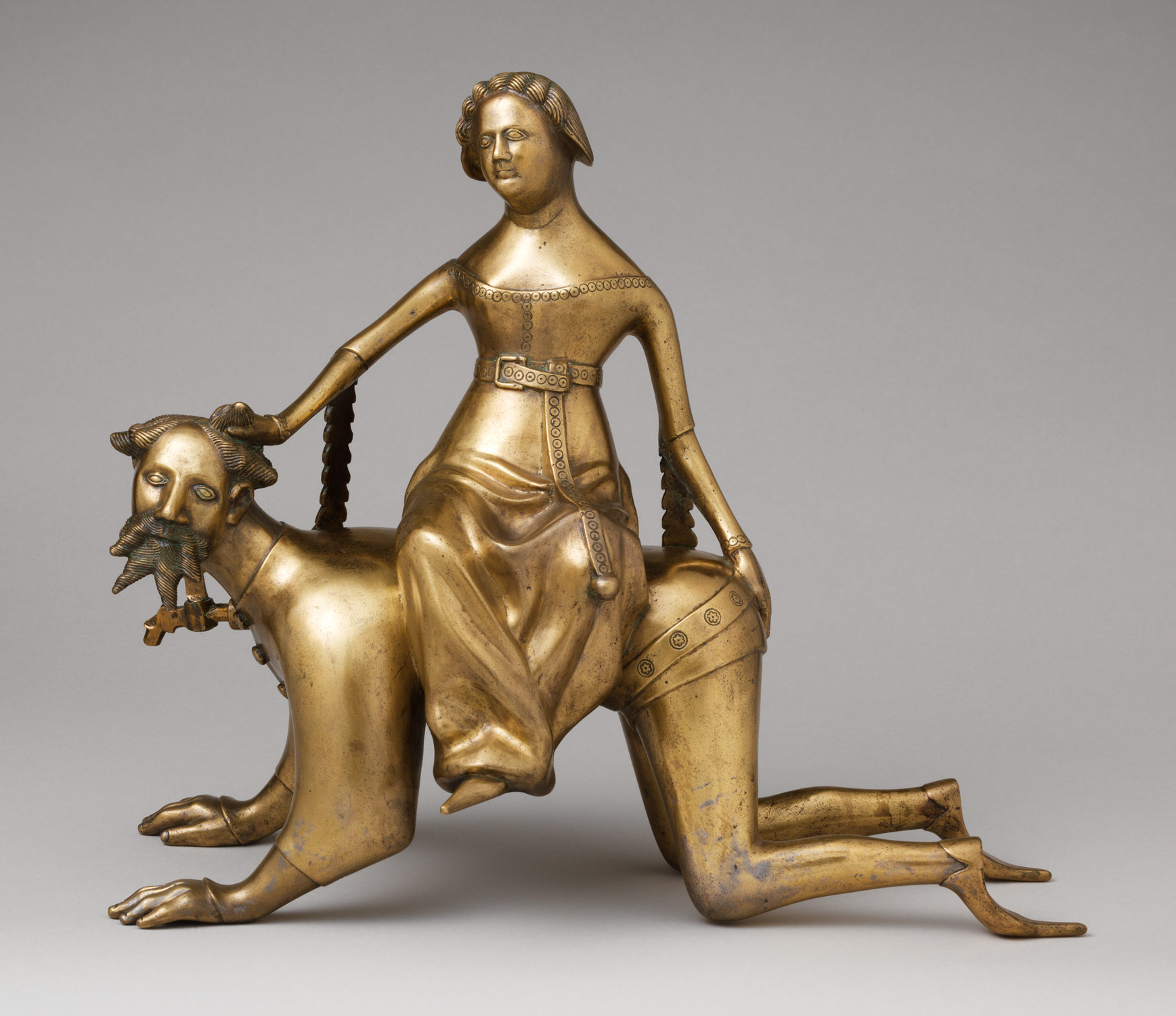Par Aristoteli stāsts ir cits. Ir saglabājušās vairākas bildes, bet mani nez kāpēc uzrunā tieši šī nelielā skulptūriņa.

This aquamanile, representing the story of the great, aging philosopher Aristotle humiliated by the beauty Phyllis, is one of the best-known examples from the Middle Ages. The narrative tells of Aristotle's annoyance that Phyllis was distracting the pupil Alexander from his studies and of his attempts to separate the lovers. In retaliation, Phyllis schemed to seduce Aristotle, promising him her affection if he would gratify her wish to be carried around the garden on the philosopher's back. Phyllis arranged to have Alexander view Aristotle's disgrace from a window. When discovered, Aristotle cautioned Alexander that if one as wise as the philosopher could be so easily duped by a woman, a less experienced man should be exceedingly cautious. (http://www.metmuseum.org/toah/works-o